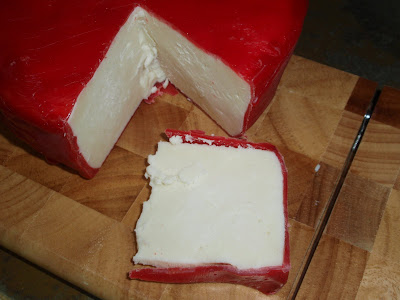This recipe is made with fruit juice concentrate, which is easy, readily available, inexpensive, and of reliable quality.
You'll need a fermentation vessel that's 20 or 30% larger than the batch you want to make. A food-grade bucket with tight-fitting lid and a hole drilled for an air-lock will do the trick. Then you'll need an air-lock to keep all the nasty bugs out. For secondary fermentation/aging, you may want a glass jug or carboy with matching airlock as well - this reduces the oxygen exposure for your wine as it clears. You may also want a bit of food-grade tubing for siphoning the wine when transferring, although you can also just pour it if you don't mind a bit of sediment.
For special ingredients, you'll want some potassium metabisulfite (or sodium metabisulfite), which comes in powder form or tablets ("Campden tablets"). This helps prevent spoilage and oxidation as the wine ages. You'll also want some potassium sorbate, which inhibits yeast reproduction after your fermentation is complete, so you can sweeten the wine a bit without it continuing to ferment.
And then you'll need wine bottles and corks (and a corker), or some other way to store your wine for aging. If you just want to try this out without spending a lot of money, you can get screw-top bottles and caps rather than investing in a corker.
Blueberry Pomegranate Wine (approx. 10.5% alcohol by volume)
Ingredients for one gallon
3 12-ounce cans of Old Orchard brand Blueberry Pomegranate frozen juice concentrate, thawed
1 cup sugar
Water to reach one gallon
1 packet of dry Montrachet wine yeast
Procedure
Sanitize your fermentation vessel (there are many different cleaners and sanitizers available - I use a no-rinse variety that's essentially the same as Oxi-clean).
Pour the thawed juice concentrate into your fermentation vessel and top off with water up to one gallon. Sprinkle the packet of yeast on top of the juice mixture, and put the lid and airlock on the fermentation vessel. You should see fermentation begin within about 24 hours, depending on how warm your room is. After about a week, no more bubbles should be visible coming through your airlock, which means likely the fermentation is complete. At this point it's best to transfer the wine off of the lees (dead/inactive yeast and all that stuff at the bottom of the bucket) and into a gallon jug with less air exposure, again sealing with an airlock. If you believe fermentation is complete, you can stabilize with the potassium sorbate - directions should be on the sorbate container, and add the potassium metabisulfite - again, directions on the container. Allow to sit for another few weeks to clear all haze, and then you are ready to bottle.
Clean and sanitize 5 bottles per gallon of wine, and transfer the stabilized and sorbated wine into your bottles and seal. If you want a sweeter wine, it should be safe to add a simple sugar syrup at this point, to taste. I add about 1/2 cup of sugar per gallon to this recipe.
Ingredients for one gallon
3 12-ounce cans of Old Orchard brand Blueberry Pomegranate frozen juice concentrate, thawed
1 cup sugar
Water to reach one gallon
1 packet of dry Montrachet wine yeast
Procedure
Sanitize your fermentation vessel (there are many different cleaners and sanitizers available - I use a no-rinse variety that's essentially the same as Oxi-clean).
Pour the thawed juice concentrate into your fermentation vessel and top off with water up to one gallon. Sprinkle the packet of yeast on top of the juice mixture, and put the lid and airlock on the fermentation vessel. You should see fermentation begin within about 24 hours, depending on how warm your room is. After about a week, no more bubbles should be visible coming through your airlock, which means likely the fermentation is complete. At this point it's best to transfer the wine off of the lees (dead/inactive yeast and all that stuff at the bottom of the bucket) and into a gallon jug with less air exposure, again sealing with an airlock. If you believe fermentation is complete, you can stabilize with the potassium sorbate - directions should be on the sorbate container, and add the potassium metabisulfite - again, directions on the container. Allow to sit for another few weeks to clear all haze, and then you are ready to bottle.
Clean and sanitize 5 bottles per gallon of wine, and transfer the stabilized and sorbated wine into your bottles and seal. If you want a sweeter wine, it should be safe to add a simple sugar syrup at this point, to taste. I add about 1/2 cup of sugar per gallon to this recipe.








